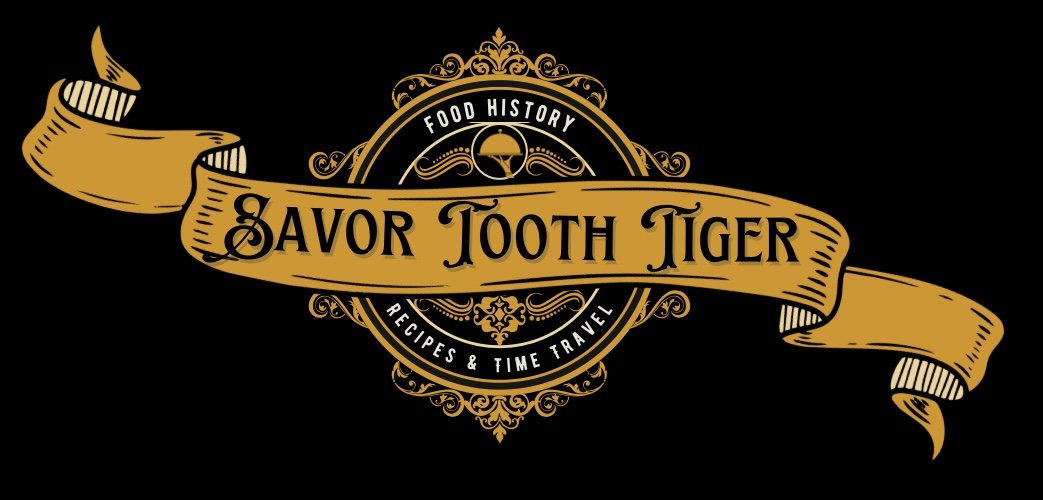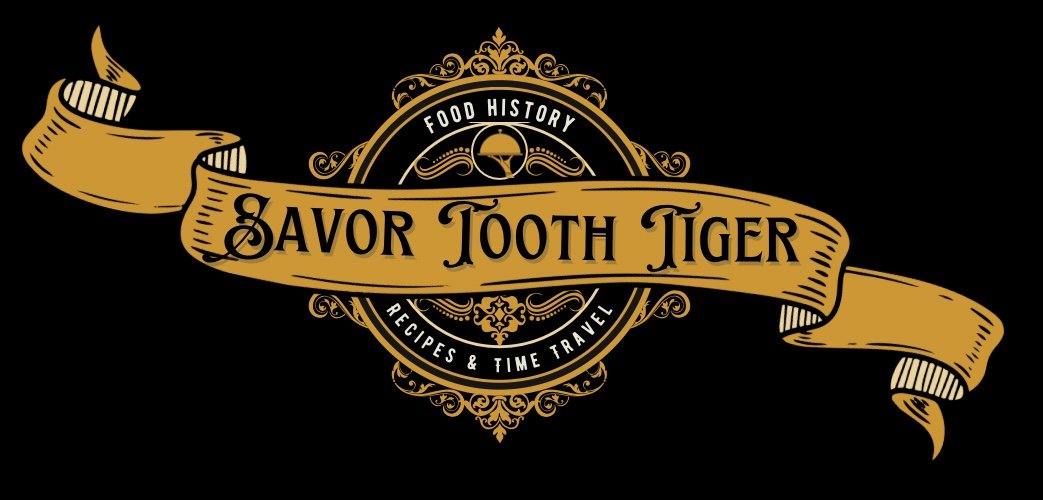Sherry Cobbler
Jerry Thomas Cocktails &
The Free Saloon Lunch
We’re going back to Victorian America to learn about the invention of cocktails & bartending and the free bar room lunch. Cocktails as we know them today were very much an American innovation. We were a nation of professional drinkers and we marketed these drinks with individuality and flair! The umbrella term for mixed drinks, cocktail, didn’t catch on until mid 19th century although it was first printed in 1803. The 1867 Paris Exhibition World’s Fair showcased the American Bar to massive success. We’ll discuss Jerry Thomas, the father of American Mixology, where Americans drank while making a popular Victorian cocktail, the Sherry Cobbler. After a drink, we’ll prove that there is such a thing as a free lunch while recreating one.
The Sherry Cobbler, easily one of the most popular cocktails of the 19th century… in America and beyond. At the Paris Exhibition World’s fair, The Sherry Cobbler was so popular, they were going through 500 bottles of sherry a day. First and foremost… crushed ice. This cocktail wouldn’t be the same without it. Ice in the Victorian era would have been chipped off a large block, then hit with a mallet or chipped into various sizes depending on the drink. Ice was an important component of these new American drinks. Who sold the ice? Americans! New Englanders began harvesting and exporting ice from frozen lakes in 1806. By the 1830s, ice was available across the country, then spread overseas on steamer ships later in the century. As mentioned in my victorian food video, this major innovation helped food travel farther and last longer. Professional bartender Jerry Thomas wrote the 1862 Bartenders guide, How to Mix Drinks or Bon Vivant’s companion. I’m using Jerry’s recipe here. The sherry cobbler made it into Charles Dickens 1843 novel, The Life and Adventures of Martin Chuzzlewit. The main character remarks “I’d certainly rather have a sherry cobbler than not, and sometimes, when its beastly hot, or when I’m in the mood for a caress rather than a left hook-a lot rather.” The Sherry Cobbler popularized the straw, especially in cocktails.
Let’s talk about Jerry Thomas because he’s essential to the story. Jerry Thomas or Americans for that matter didn’t invent mixing alcohol with other ingredients. Communal bowls of punch were a longstanding colonial tradition in America, learned from English ways of life. What marks American mixology is individuality & flair. Add ice and fun names and you’ve got a world wide phenomenon. The first luxury hotel bar was New York’s aptly named “City Hotel” in 1794.
The barroom off the lobby had a liquor cage so that the drinks could be safely locked away while the bar was closed(which wasn’t long because this is the 19th century and we were a nation of all day imbibers). Luxurious bars became the heart of the hotel and were designed to impress. Ornate carved mahogany, brass foot rails, crystal chandeliers, priceless artwork and grand pianos became the standard of luxury from St. Louis to New Orleans to New York City. This is where the art of mixology was developed with Jerry Thomas leading the charge as he worked his way across the country as the principal bartender at the metropolitan hotel in New York and the planters house in st.Louis. No one was going to keep Jerry in a liquor cage. Behind the bar, he put on a show, pouring his famous blue blazer cocktail ON FIRE from cup to cup above his head. His cocktail book went on to standardize mixology for the rest of the century and then some.
For those not able to afford the finest hotel cocktails, there was the saloon. A place for average Americans to eat and drink. Does it surprise anyone that these were male dominated spaces? Victorian ideals still dictated that a woman’s place was at home but that didn’t keep them from the bar. American women did drink, despite the temperance movement’s best efforts. Many saloons & barrooms had separate ladies entrances or family entrances to purchase drinks to bring home. Nearing the end of the century, women did frequent saloon back rooms for socializing and free lunch but women rarely entered the male dominated area of the barroom…and for good reason…the horrors of profanity, fighting, gambling, spittoons and surely the smells. A few saloons featured a urination trough on the floor, running the length of the bar for those too lazy to leave their stool! Yeah I’d be drinking in the back room far from that nonsense.
These bars were mainly run by men too. The exception being Ada Coleman, one of the first world famous female bartenders at the American bar of the savoy hotel in London. There were a few trailblazing women who ran saloons with colorful names like Big Tit Irene’s and Peckerhead Kate’s. Sadly I could not find photos but I’m sure you can use your imagination. Upper class women were occasionally permitted to celebrate at parties held at hotel bar rooms. Hotel bars were more about class division than gender, many often implementing strict dress codes to keep lower classes out. And the old west had its own set of rules (but that’s another video!)
The old expression “there’s no such thing as a free lunch” comes from this tradition of saloons offering “free” lunch with purchase of a drink in hopes to entice customers to stay for a few more rounds. Let us also note that this is free lunch, not free dinner, a nod to the very Victorian custom of day drinking, and then going back to work. Although, many free lunches were offered all day. For a nickel beer, you could have access to the buffet.(show nickel & beer, then full table) Depending on the area of the country and the price of drinks, the food varied wildly.
New Orleans was famous for their excellent free lunches of oysters, caviar, soup, ham and roast beef. The worst? Atlanta, which had laws regulating free lunch so you were lucky to get some cheese and crackers.
On the cheap end, it was transactional… One beer for one oyster or one hard boiled egg.
Many saloons had bouncer types to make sure you didn’t eat more than your nickle’s worth, this practice was called giving them the bum’s rush. Across the country, saloons catered to the tastes of various ethnic groups. A predominantly German neighborhood saloon in Chicago might have served bratwurst and sardellen (sardines on rye), while southern saloons of New Orleans might serve fish on Fridays to cater to the large catholic population.
The common denominator of the free lunch was salt. The saltier the food, the more drinks would be sold. In the words of Seinfeld’s Cosmo Kramer, “These pretzels are making me thirsty!” Before mechanical refrigeration and food sitting on buffet tables all day, you can imagine all the fun food poisoning possibilities! Especially a saloon lunch favorite… the cannibal sandwich, raw ground beef on pumpernickel. The free lunch fed working Americans well into the 20th century but died with the saloon era during prohibition. The closest comparison of today is free food or drinks at a casino or strip club.
Thanks for joining me, see you in the next era!

Sherry Cobbler
Ingredients
- 4 ounces sherry wine (almontillado)
- 1 teaspoon sugar
- 2 slices of orange, and another for garnish
- a few raspberries
- Crushed ice
Instructions
- Using a clean linen towel or Lewis bag, crush ice with a mallet.
- Fill a glass with crushed ice.
- In a cocktail shaker, add slices of orange, berries, sugar and sherry with regular ice. Shake well.
- Pour and strain over fresh crushed ice.
- Garnish with orange slice, berries and a straw.







